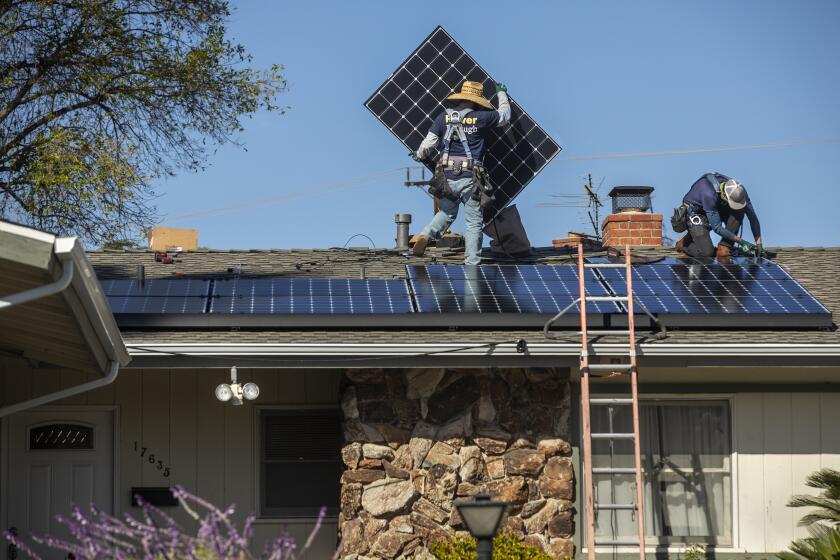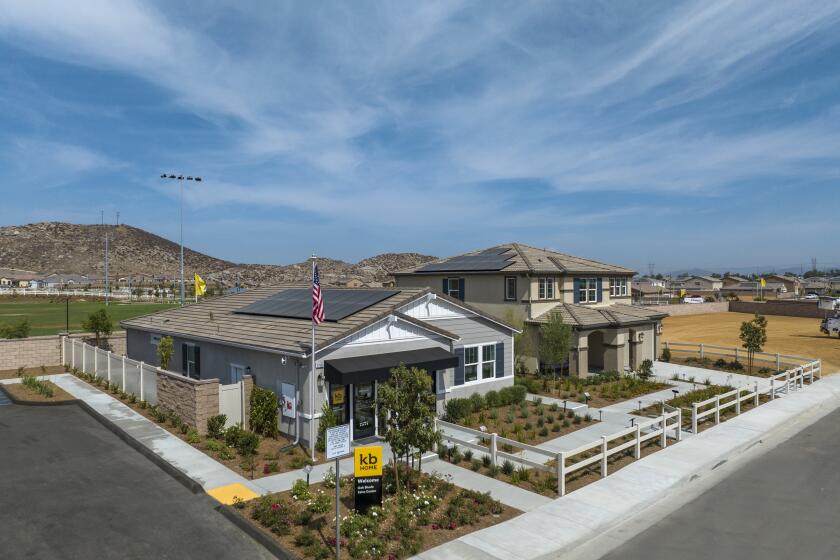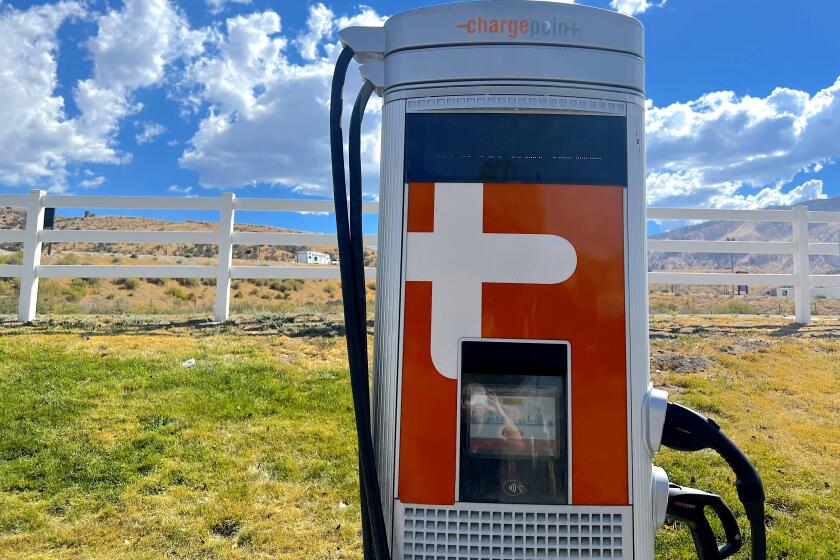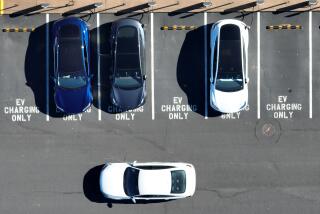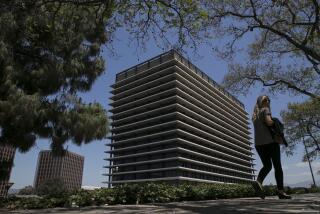California regulators OK $1 billion for EV charging project, mostly for trucks

The California Public Utilities Commission has approved a $1-billion vehicle electrification charging project, with most of the money earmarked to accelerate the number of midsize and heavy-duty trucks on the state’s roads.
Some 70% of the funds will go to charging medium- and heavy-duty vehicles, which combine to account for a disproportionate amount of greenhouse gas emissions in the transportation sector. Costs of the five-year program will be spread out among utility ratepayers across California.
“It’s the highest priority,” Commissioner Clifford Rechtschaffen said. “We have very stringent state goals established by the Air Resources Board to electrify medium- and heavy-duty trucks and they need charging infrastructure in order to electrify their fleets.”
The remaining 30% will go to charging light-duty electric vehicles at or near multiunit dwellings.
The program places a priority on low-income and tribal areas, with 65% of the funds going to underserved communities. No money is allocated for building EV charging infrastructure at individual homes.
Homes and businesses would receive lower payments for clean power they send to the grid — but not as low as under an earlier proposal.
The program will start in 2025 and run through 2029, with $200 million allocated each year through the state’s utilities. Money will be given back to customers in the form of rebates.
Details of how the program will work still need to be figured out. A study will be conducted to determine the size of the rebate, and customers who want to install the equipment will apply to a third-party administrator to receive the rebate.
“We don’t know exactly what the amounts will be and how much the budget will cover,” Rechtschaffen said, “but the idea is to cover all or most of the costs of the equipment.”
The charging infrastructure for trucks will be installed at a variety of places, including truck stops, ports and at facilities owned by companies that manage fleets. Transit agency depots are also potential sites for buses.
Although the cost to ratepayers is expected to be low — a commission staffer estimated less than $1 a month for each San Diego Gas & Electric customer, for example — the rebate program comes as many people complain that their monthly bills keep getting higher.
Some 200 homes are being built with solar panels and batteries. They’re linked to microgrids that can operate independent of California’s grid if it fails.
“I think over time electrification — including transportation electrification — will result in lower rates,” Rechtschaffen said.
The rebate program, approved Nov. 17 on a 4-0 vote, includes a provision that calls for an evaluation of the program and its funding amounts after three years.
“If at that point, we determine it’s just too much to bear for ratepayers, we can reconsider,” Rechtschaffen said.
The Public Advocates Office, the CPUC’s independent watchdog for ratepayers, issued a position paper last week on funding transportation electrification in California and said utility customers should not fund transportation electrification infrastructure, calling the practice regressive.
“Increasing electric rates to fund the state’s [greenhouse gas] reduction initiatives, therefore, places a disproportionate burden on low-income families,” the paper said. “This is also counterproductive as this increases the cost of fueling electric vehicles, which in turn reduces the incentive to purchase electric vehicles.”
A trip from the Bay Area to Southern California highlights the miserable state of the charging network available to many electric vehicle drivers.
It’s estimated that the transportation sector is responsible for more than half of all of California’s carbon pollution, 80% of smog-forming pollution and 95% of toxic diesel emissions.
While many Californians are familiar with Gov. Gavin Newsom’s executive order banning the sale of new gasoline-powered passenger cars by 2035, the mandate also directed the California Air Resources Board to develop regulations requiring all operations of medium- and heavy-duty vehicles to achieve zero emissions by 2045.
The rule goes into effect by 2035 for drayage trucks — vehicles commonly used to transport freight from an ocean port to a short distance, or what transportation analysts call the “first mile.”
Like electric passenger cars, a major challenge for the zero-emission trucking segment is solving a “chicken and the egg” problem: Customers may be reluctant to buy an EV because there aren’t enough charging stations and there aren’t enough stations because EVs make up a relatively small percentage of vehicles on the road.
The state budget includes $10 billion over the next six years to put more electric cars and trucks on roadways and in ports. The federal government’s Infrastructure Investment and Jobs Act will funnel several hundred million more dollars to California for similar efforts.
“We need all that and more, and we need a lot of private investment as well,” Rechtschaffen said. “Public investment is really essential in the next 3, 5, 10 years as the market transforms itself.”
More to Read
Inside the business of entertainment
The Wide Shot brings you news, analysis and insights on everything from streaming wars to production — and what it all means for the future.
You may occasionally receive promotional content from the Los Angeles Times.
